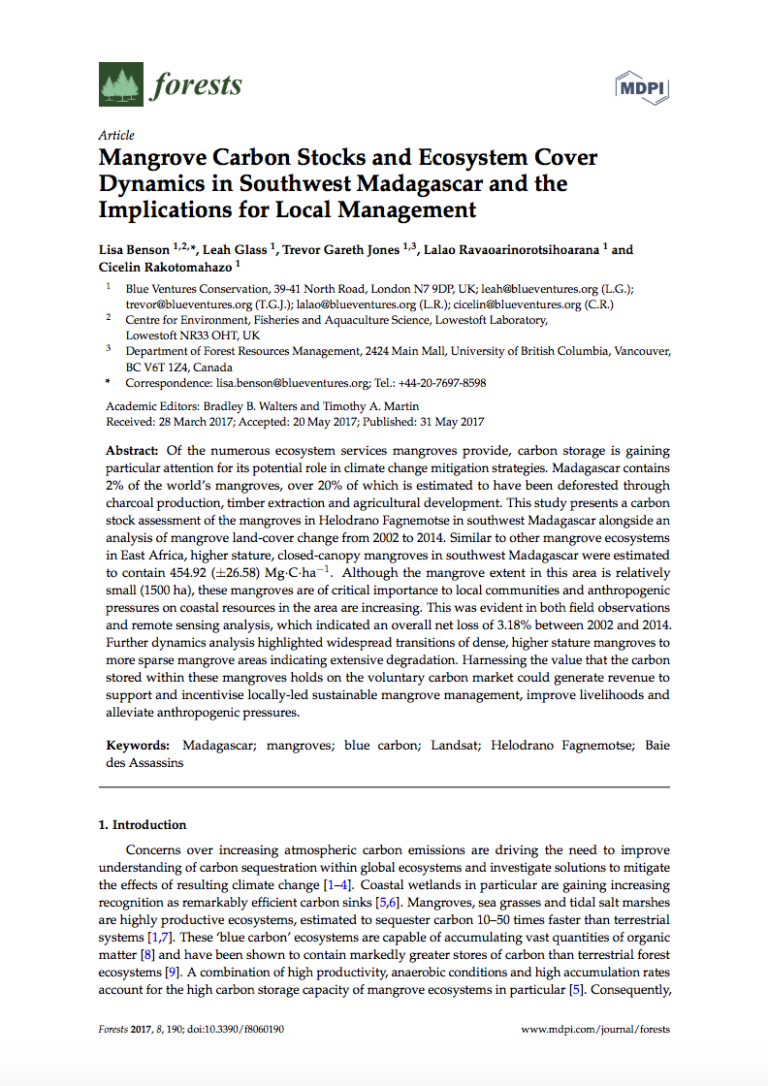Abstract:
Of the numerous ecosystem services mangroves provide, carbon storage is gaining particular attention for its potential role in climate change mitigation strategies. Madagascar contains 2% of the world’s mangroves, over 20% of which is estimated to have been deforested through charcoal production, timber extraction and agricultural development. This study presents a carbon stock assessment of the mangroves in Helodrano Fagnemotse in southwest Madagascar alongside an analysis of mangrove land-cover change from 2002 to 2014. Similar to other mangrove ecosystems in East Africa, higher stature, closed-canopy mangroves in southwest Madagascar were estimated to contain 454.92 (26.58) MgCha 1. Although the mangrove extent in this area is relatively small (1500 ha), these mangroves are of critical importance to local communities and anthropogenic pressures on coastal resources in the area are increasing. This was evident in both field observations and remote sensing analysis, which indicated an overall net loss of 3.18% between 2002 and 2014. Further dynamics analysis highlighted widespread transitions of dense, higher stature mangroves to more sparse mangrove areas indicating extensive degradation. Harnessing the value that the carbon stored within these mangroves holds on the voluntary carbon market could generate revenue to support and incentivise locally-led sustainable mangrove management, improve livelihoods and alleviate anthropogenic pressures.
Keywords:
Madagascar; mangroves; blue carbon; Landsat; Helodrano Fagnemotse; Baie des Assassins

















